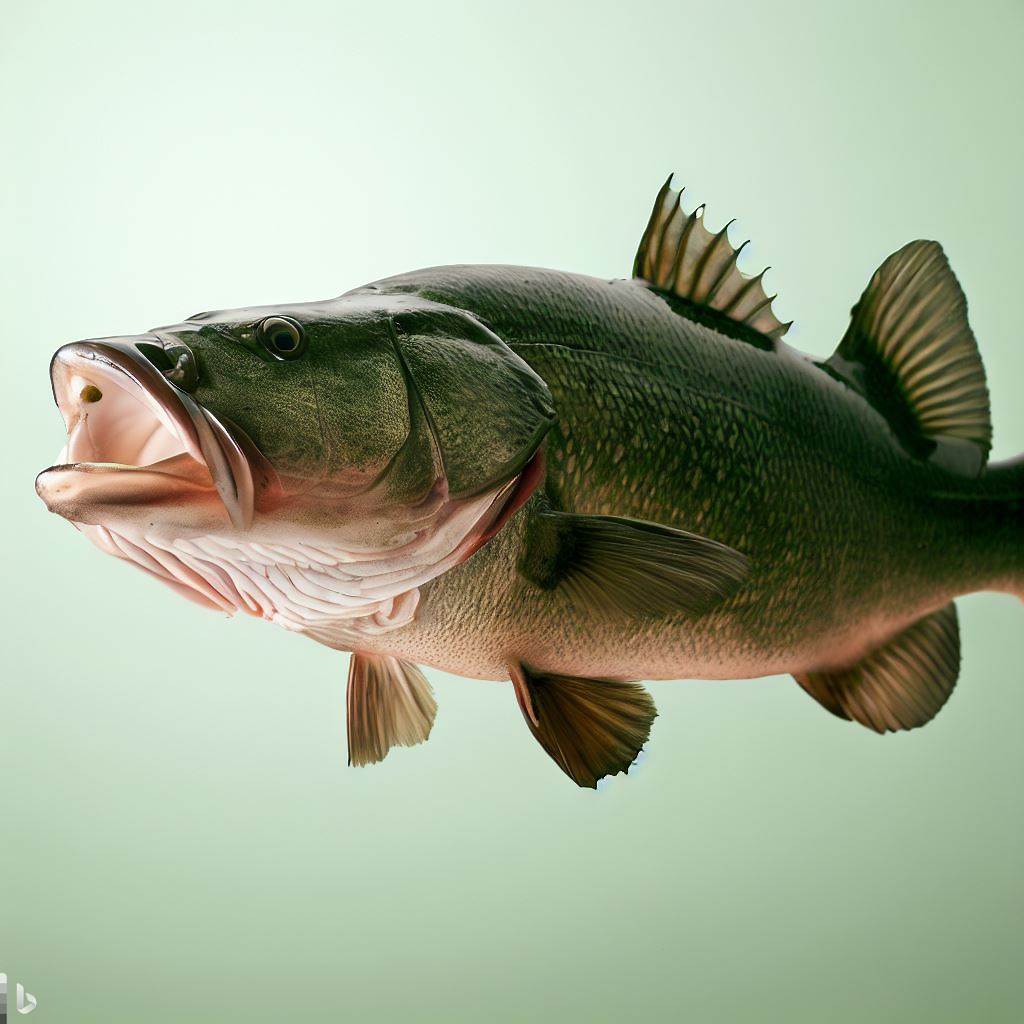Largemouth bass

The largemouth bass (Micropterus salmoides) is a highly esteemed freshwater fish species renowned for its formidable size and aggressive demeanor. Also known as black bass or bigmouth bass, this member of the Centrarchidae family holds great allure for anglers. With a maximum recorded length of 76 centimeters (30 inches) and a weight of 10.1 kilograms (22 pounds), the largemouth bass emerges as a remarkable game fish. Its lifespan typically spans from 10 to 16 years, and it boasts widespread distribution across North America.
Anatomy and Physical Characteristics
Distinguishing physical attributes of the largemouth bass contribute to its predatory success. Most notable is its expansive mouth, capable of extending beyond the confines of its eyes, enabling it to engulf relatively large prey. Adult largemouth bass generally measure around 40 centimeters (16 inches) in length, although exceptional individuals can reach an impressive 76 centimeters (30 inches). In terms of weight, this species usually ranges from 0.5 to 2 kilograms (1 to 4 pounds), though larger specimens surpassing 10 kilograms (22 pounds) have been documented.
The coloration of this freshwater fish showcases a captivating array, transitioning from greenish to olive on the upper body and adopting a lighter hue on the ventral side. Distinctive dark blotches adorn its flanks, forming a recognizable pattern. Furthermore, largemouth bass possess a lateral line system, facilitating the detection of water movements and vibrations, thereby enhancing their predatory instincts.
Optimal Fishing Periods for Largemouth Bass
Largemouth bass exhibit varying behavioral and feeding patterns influenced by diurnal cycles, weather conditions, and seasonal fluctuations. A profound comprehension of these factors proves indispensable for fruitful angling endeavors. In spring, as water temperatures rise to approximately 60-75°F (15-24°C), largemouth bass display heightened activity levels. They exhibit more aggressive feeding tendencies during early morning and late afternoon, leveraging low-light conditions to their advantage. As summer unfolds and water temperatures soar to 80-90°F (27-32°C), largemouth bass tend to seek refuge in shaded areas or deeper waters during the sunniest intervals of the day. The most fruitful periods for angling remain the early morning and evening hours.
During autumn, as water temperatures cool to 60-70°F (15-21°C), largemouth bass experience renewed vitality, engaging in continuous feeding throughout the day. They focus their attention on schools of baitfish, capitalizing on their augmented activity prior to the winter season. In winter, when water temperatures plummet below 50°F (10°C), largemouth bass diminish their activity levels and display reduced responsiveness to angling techniques.
Distribution of Largemouth Bass
Largemouth bass primarily inhabit North America, ranging from southern Canada to northern Mexico. Their presence extends across diverse freshwater habitats, including lakes, reservoirs, ponds, rivers, and streams. Owing to their status as a highly sought-after game fish, largemouth bass have been introduced to various regions worldwide, resulting in self-sustaining populations in countries such as Japan, South Africa, and Australia. Nonetheless, their native distribution predominantly centers around the United States, particularly the eastern and central regions of the country.
Largemouth Bass Spawning
Spawning behavior in largemouth bass typically transpires in spring when water temperatures reach approximately 60-75°F (15-24°C). Female largemouth bass deposit their eggs into nests prepared by the males in shallow areas abundant in vegetation or submerged structures. A single female is capable of laying thousands of eggs, which are subsequently fertilized by the male. Post-hatching, the male diligently safeguards the fry until they attain a size suitable for independent survival.
Dietary Preferences of Largemouth Bass
Largemouth bass adopt an opportunistic approach to predation, demonstrating a diverse dietary repertoire. They primarily target smaller fish species, such as minnows, shad, and sunfish, while also incorporating crayfish, frogs, insects, and occasionally small mammals or birds that inadvertently enter the water. Largemouth bass are adept ambush predators, often lurking near structures or vegetation, patiently awaiting the opportune moment to strike unsuspecting prey. This predilection enables them to effectively manage populations of smaller fish, thus preserving a balanced ecosystem.
Ecological Significance
Largemouth bass assume a crucial ecological role within freshwater ecosystems as apex predators. They aid in regulating the populations of smaller fish and other aquatic organisms, thereby contributing to the overall equilibrium and well-being of the ecosystem. Furthermore, largemouth bass serve as highly popular sport fish, attracting anglers and stimulating local economies through recreational fishing activities. Given their cultural and economic value, the conservation and sustainable management of this species assume paramount importance.


